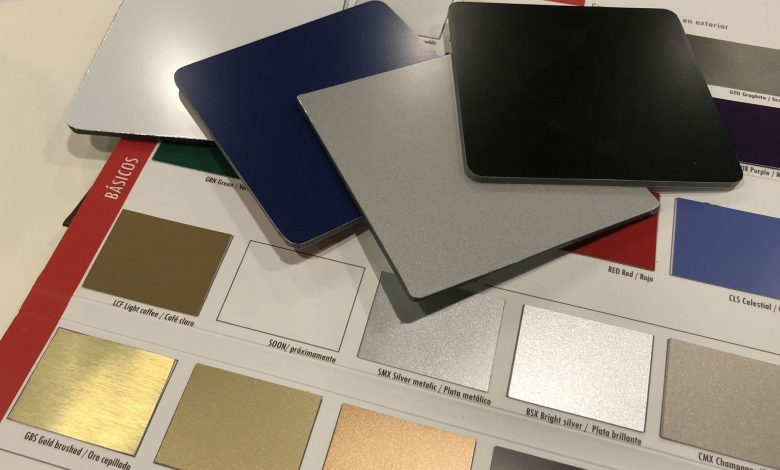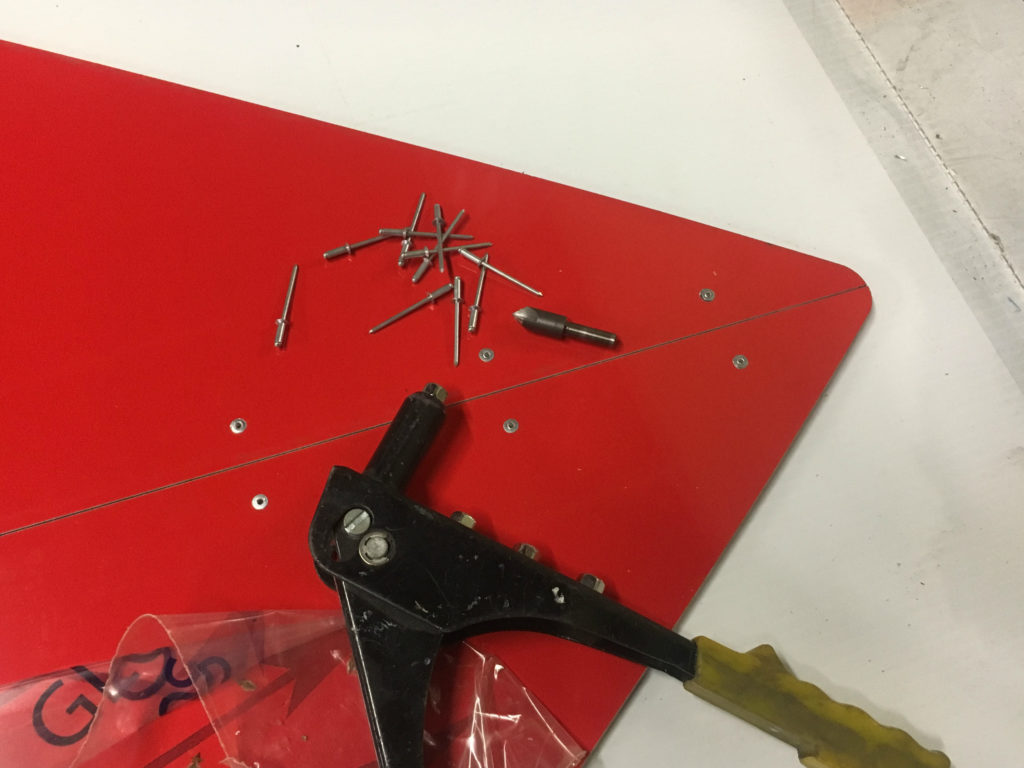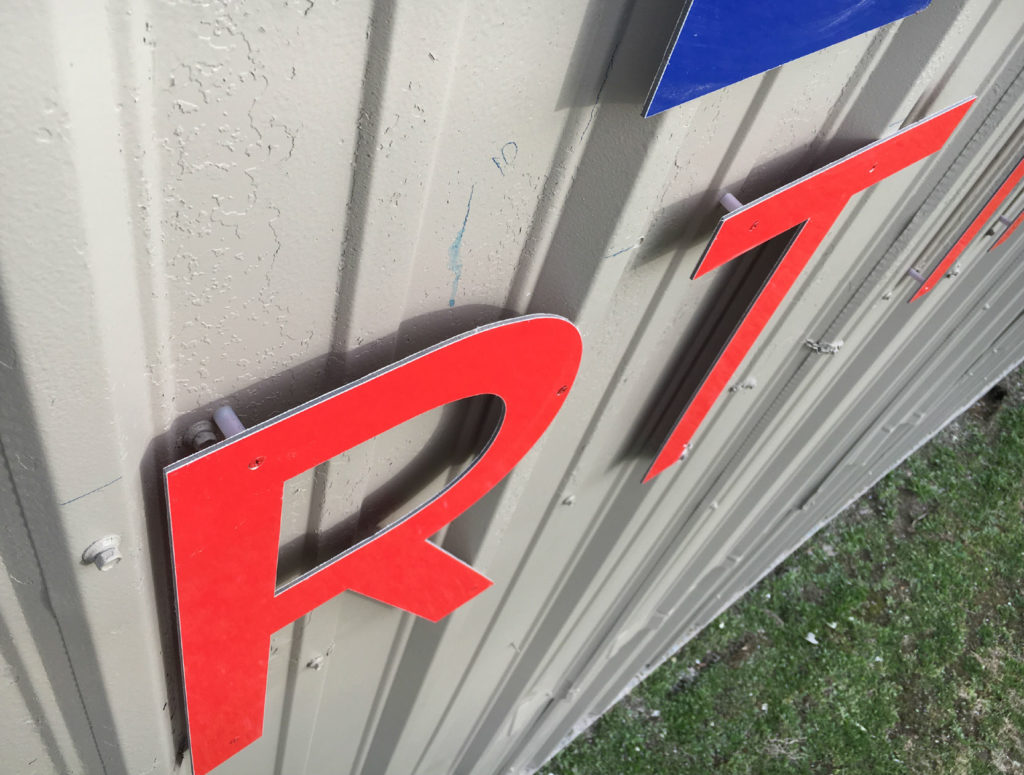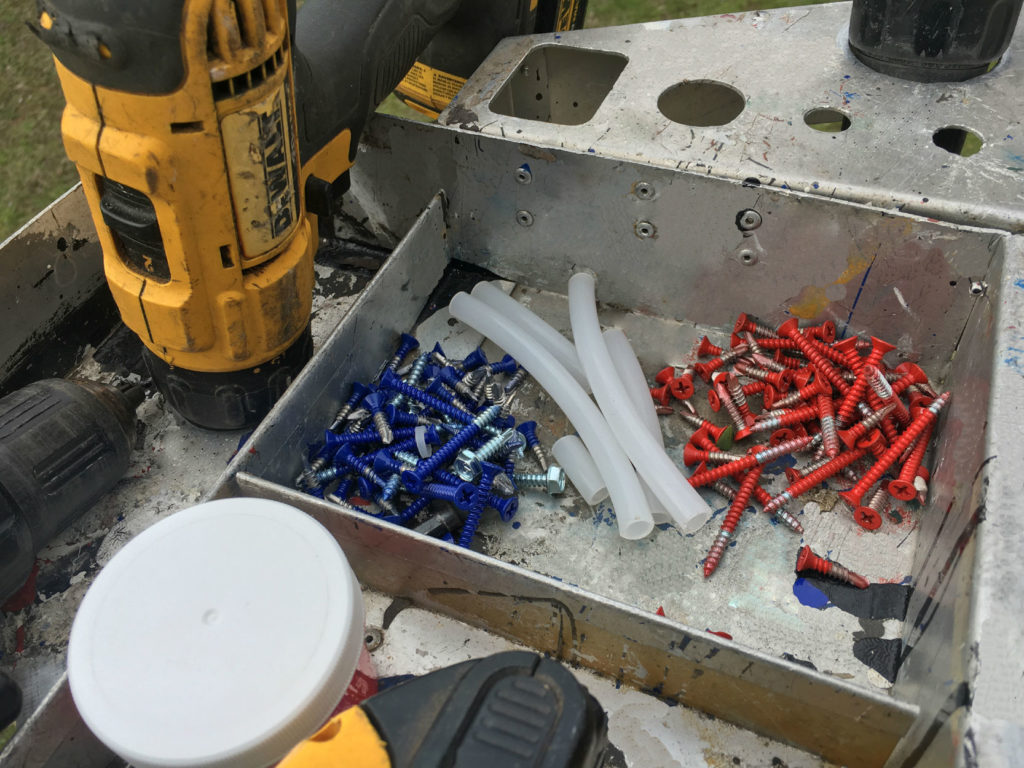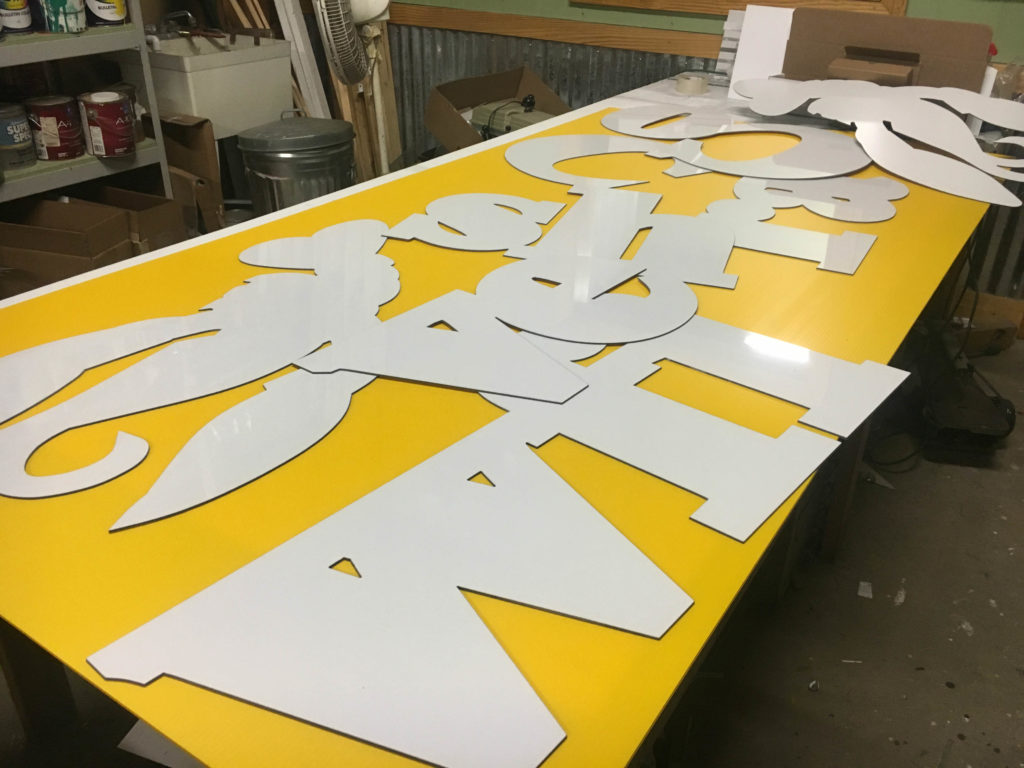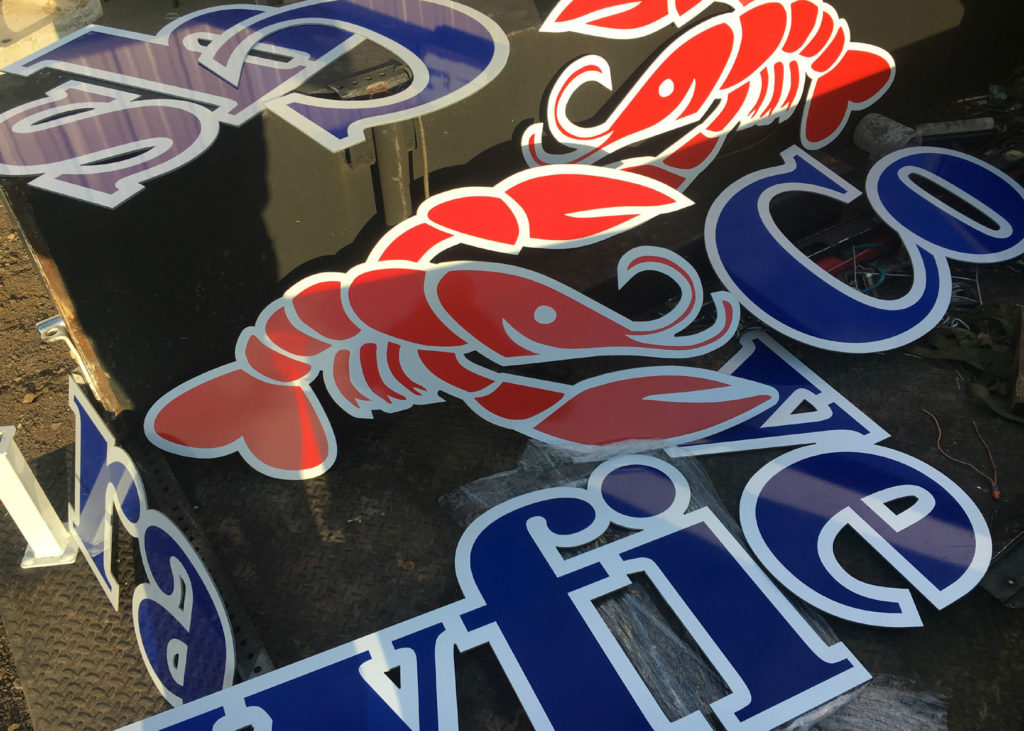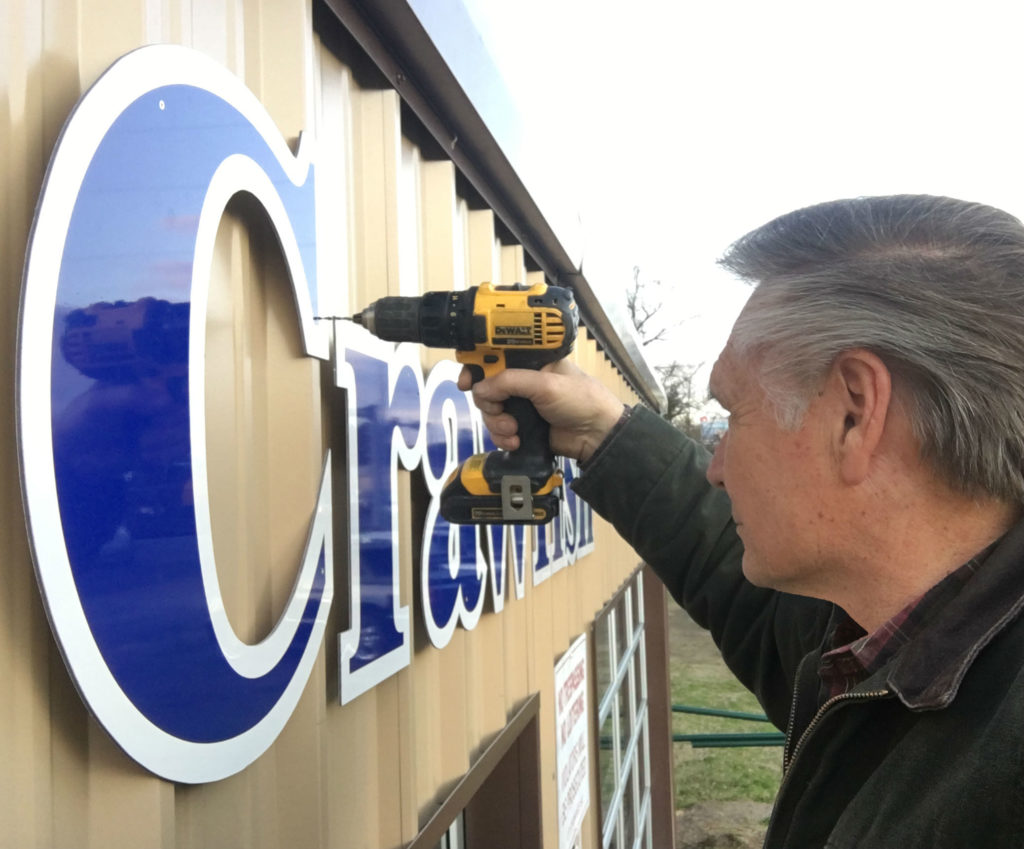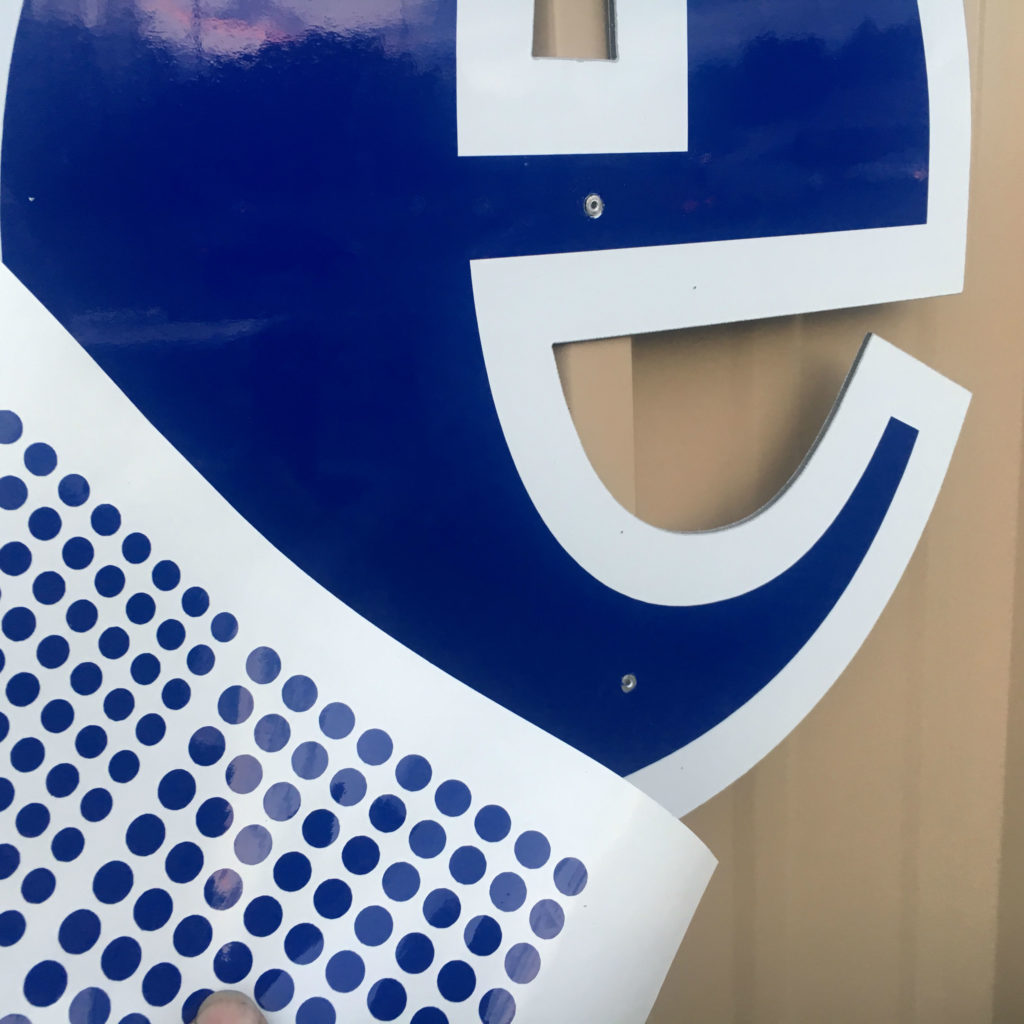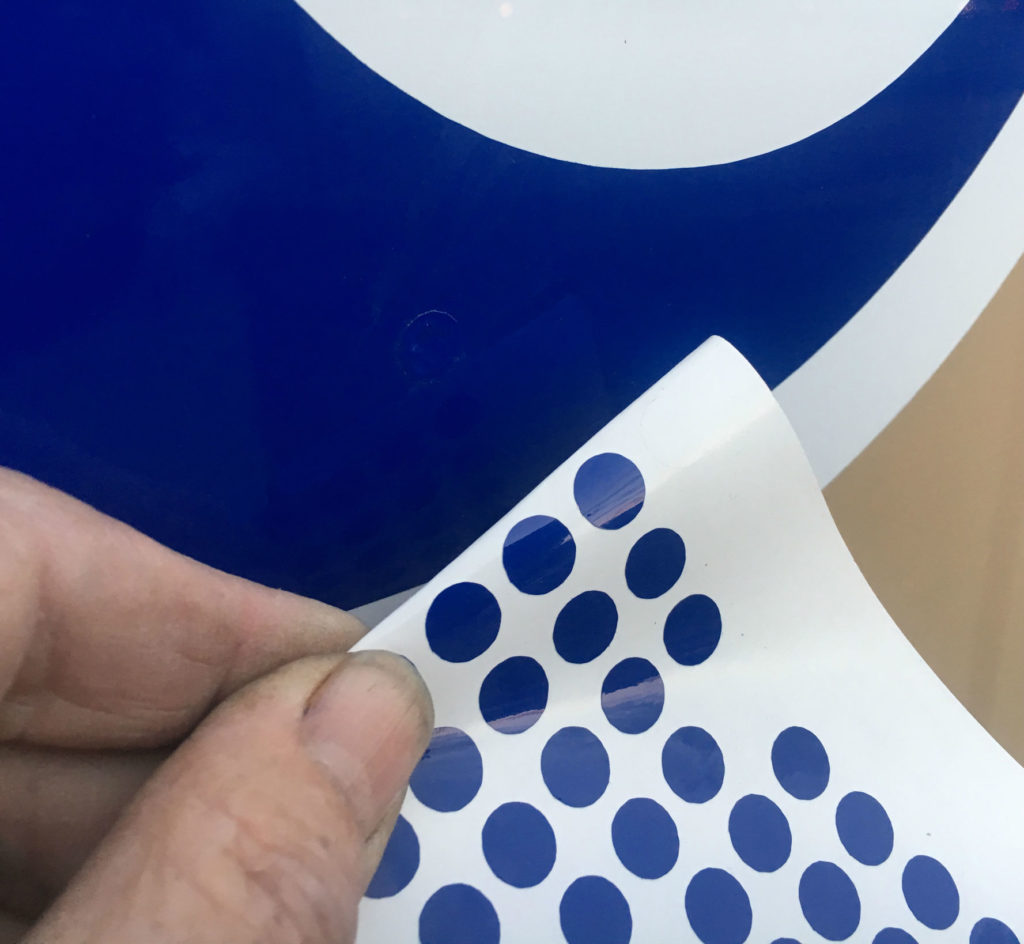Shop Talk: Working with Large Logos and Letters
Fabricating large logos and letters using aluminum laminate sign materials
Of all the sign jobs we’ve done in the past, there is a type of work that is probably my favorite. And to be the best jobs, the criteria are simple: be fast, efficient, and fun to produce; involve simple, uncomplicated installation; and have a healthy profit margin each time.
Few of the types of sign work we are doing each month will meet even half of those criteria, but large cutout logos and letters, made from modern aluminum laminate material, will fit the bill just about every time. That is because the cutting of this material is fast and efficient, no prep, painting or powder coating will be required as well as handling, drilling and countersinking. And installing signs, letters, and logos made from this rigid yet lightweight, and pre-finished material are easy to install as well.
Let’s look at some jobs and go over simple tips to make these projects go a little faster and perhaps look a bit better once on the client’s building.
First, the number of manufacturers of laminated material of this type keeps growing, and colors and special metallic finishes are becoming more available all the time (though no dealer will inventory all the colors or finishes). And the material, as most sign guys know by now, is very flat, rigid for its weight, easy to cut, drill or form.
My best guess is over time the mills will come out with better and more diverse materials of this type, having a very thin corrosion-resistant metal (aluminum) skin on both sides of a core of recycled plastic. There is no shortage of either of these materials, in fact, there is an unlimited supply of recycled plastic all the time. I believe that eventually there will be textured finishes, thicker plastic foam-filled materials for more serious construction, and other stylish variables that haven’t been worked out yet but will be.
Martin Transportation
For signs, logos, and letters, interior or exterior, newer aluminum laminate materials are hard to beat. One job that was certainly enjoyable because of its simplicity, large size, and good profit margins (because of its efficiency), was a logo and letter job we did for our client, Martin Transportation. To make a good profit, we did not overcharge them or have to, because their large letters and a clean simple logo were just fun to do, and didn’t take long to cut or even to install.
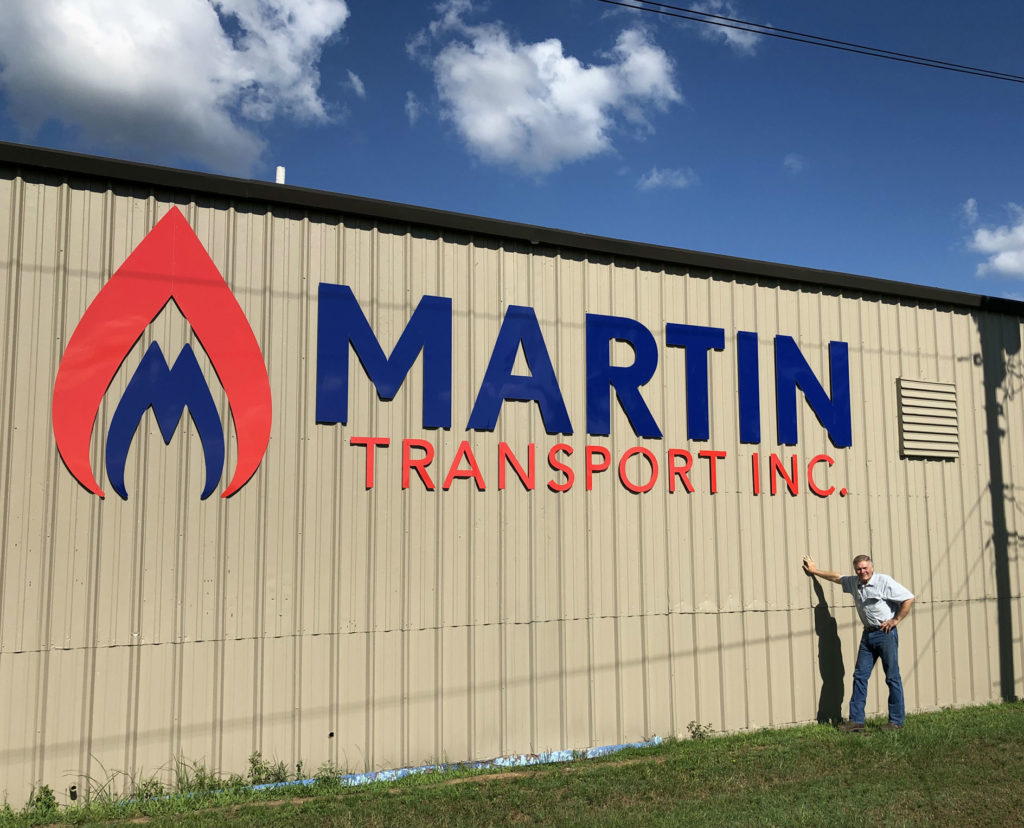
The 8′ tall logo, at least the larger red part of it, had to be put together in two pieces, but that was done at the shop, and because of this material’s lightweight it was still a one-man job to install even the largest element, not even a challenge. Because the lettering was mostly very large too, few spacers were needed as everything could be screwed to the ribs in the corrugated metal building wall we were installing them to.
If possible, I like to have my flat head No. 8 or No. 10 size screws powder coated or painted in advance. On the job, the holes I drill are quickly and carefully countersunk (don’t want to overdo that step), and the matching hardware means I don’t have to take time to do any touch-up painting after installing all the parts. What’s not to like about that?
Actually, if using screws, the best choice is for selecting stainless steel screws as no matter how long the job lasts, hardware starting to rust will never become a problem.
Crawfish Cove
Some of our projects made of laminate material are turned into a two-tone graphic by applying high-performance vinyls over cutouts that include an outline and shadow. As is typical with these two-color jobs, the sheet color becomes the visible outline and shadow, and the lettering or logo is done in a second color plotted from high-performance vinyls. It goes without saying that we would never use intermediate vinyl on letters or logos like this as the laminate material will outlast even HP vinyl graphics and it is the vinyl itself that determines the project’s exterior lifespan.
Here’s a job we completed for a local, small roadside eatery specializing in boiled crawfish. As always, the lettering and logos cut very quickly on a CNC cutting machine (waterjet or router), and the all-white elements were then decorated with simple vivid blue and med red hp vinyl.
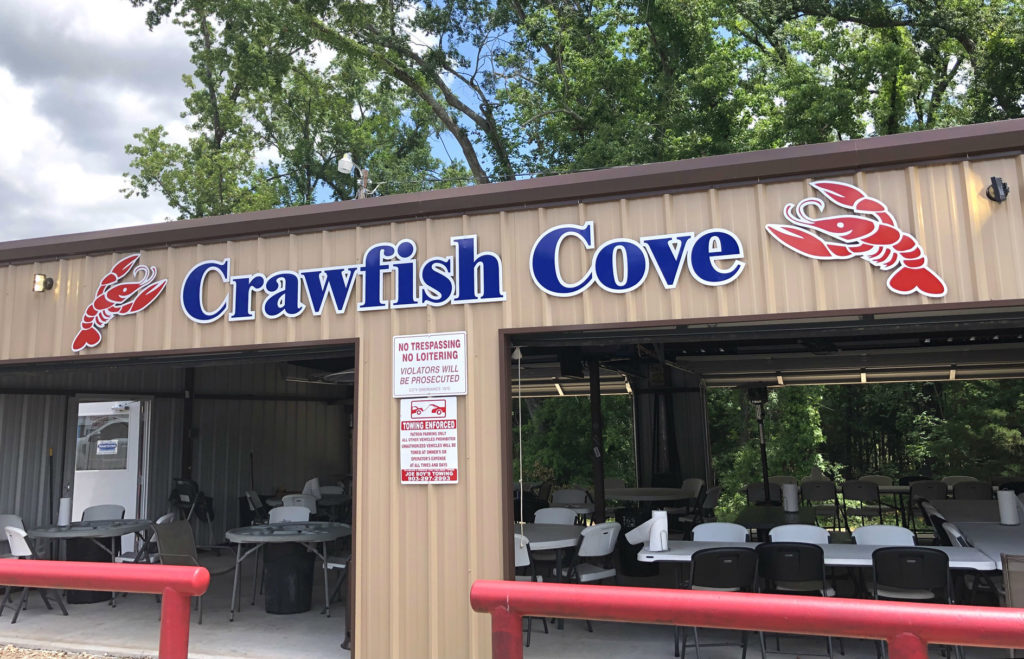
This job was installed on the front of a new metal building, which had huge glass-paned garage doors that could be raised all the way up on fair-weather days. Instead of coated sheet metal screws, on this job we used flat head, counter-sunk rivets to secure the parts to the corrugated ribs on the building.
Deliberately I kept all the fasteners in the red and blue areas of the graphics and brought small sheets of “dots” of the same red and blue HP vinyl to cover the flat rivets with. This method of hiding install hardware is very effective, as from just a few feet away it is nearly impossible to locate where the rivets were placed.
If installing graphics with rivets, I use more than when using screws with somewhat larger heads, as aluminum laminate material is soft, rivet heads are small, and winds in a thunderstorm can put a strain on anything.
As I mentioned, what I like about these types of jobs is the speed and efficiency of completing them, as going straight from cutting to installing without any finishing requirements just speeds the whole process up. This also helps the client get more eye-catching sign exposure for their advertising dollar, too.
Happy Cabbage
The job we did for an antique and gift shop on the main street of a local small-town makes a good example of lots of sign benefit for a reasonable cost.
The large two-tone orange and white display we did for Happy Cabbage changed the look of the whole exterior of their 80-year-old building, and the cost was less than $1,500, installation included.

Of course, some of the work we do using laminate materials may be stud mounted, where gluing threaded plastic pads in place allows for hiding the fasteners completely. If letters and logos are cut on a router (verses a waterjet), the router can score circles, marking precisely where the pads will go, and later very accurate patterns can be digitally printed onto paper showing the location of each threaded pad. This makes producing highly accurate install patterns a cinch.
And when working on interior projects, the handsome look and lightweight characteristics of laminate materials are perfect there as well. Doing multiple layers on jobs, and of course, two-tone or printed graphics over laminate cutouts extend the color choices and final appearance of letters and logos made from this useful and highly practical sign substrate.
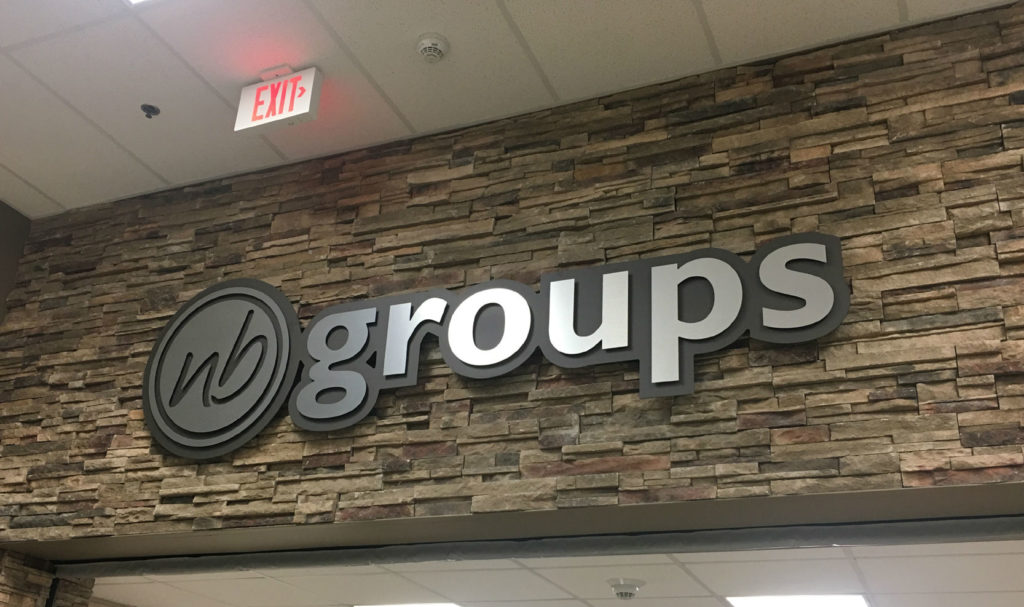
For us, and any sign maker wanting to get from start to finish quickly, and with a predictable profit margin and professional-looking outcome, the ever-improving aluminum laminate sign materials are making our jobs easier, faster, and even more fun, and that’s a combination that’s easy to appreciate.
